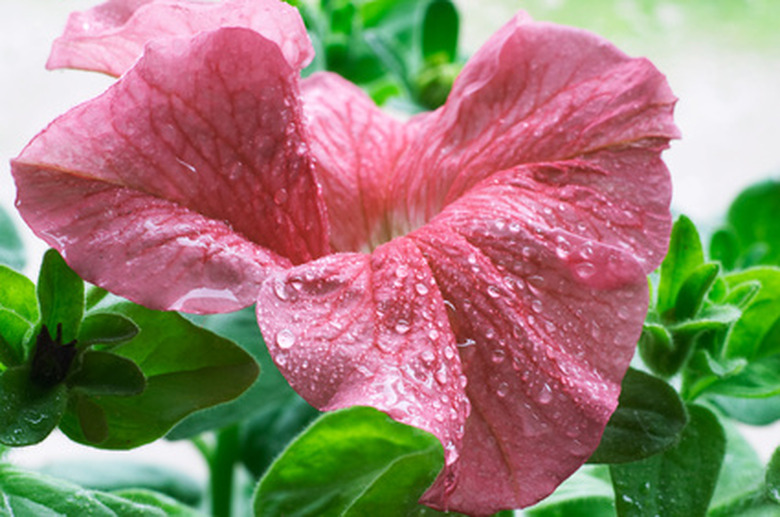What Is The Difference Between Supertunia And Wave Petunias?
We may receive a commission on purchases made from links.
Supertunias and Wave petunias are both newer petunia (Petunia × hybrida) options, with Wave petunias coming to the market in 1995 and Supertunia plants hitting the market in 2006. Both types produce bright, beautiful, long-lasting blooms. The flowers themselves look similar, but the growth habits, propagation methods and best uses are different for the two types. Choosing between them often comes down to how you plan to use the flowers and what type of look you want.
Tip
Supertunia and Wave petunias look similar, but they differ significantly in several ways, including growth habits and propagation methods.
Wave Petunia Growth Habits
Wave Petunia Growth Habits
Wave petunias develop large root systems and spread quickly throughout the space they're in. When planted in the ground, they can overtake the entire area. While that's a good trait to have when you want a flower to cover an area with bright color, it can be a negative in some situations. They sometimes overtake other flowers or plants in the area because of their aggressive growth.
Wave petunias come in three main sizes: Tidal Wave, Shock Wave and Easy Wave. Tidal Wave petunias grow the largest flowers for Wave petunias. Shock Wave plants have the smallest blooms. Easy Wave petunias are spreading plants.
Supertunia Growth Habits
Supertunia Growth Habits
Supertunias have a smaller root system than Wave petunias, making it easier to plant them with other flowers. They're not as aggressive with their growth. Like Wave petunias, they come in a variety of sizes and types. The bloom size and growth patterns vary. Some are mounding, while others are more trailing.
Supertunia and Wave Petunias: Appearance
Supertunia and Wave Petunias: Appearance
The blooms on Supertunias and Wave petunias look similar with the classic funnel shape that's easily distinguishable. Both types of petunias come in a wide range of colors with both single and double bloom options. You can get either type in solid colors and multicolored blooms (striped or veined). Wave petunias can start to get leggy later in the summer.
Differences in Use
Differences in Use
Wave petunias work well as ground cover. The large root system lets them grow aggressively and cover a large patch of ground quickly. Because of the roots, they aren't as well-suited to container growing, but they can still be used in containers. They can take over the container quickly because of their aggressive growth, so they're often best as the only flower in the container.
Supertunias work well in containers and hanging baskets. The natural draping and trailing habit looks beautiful over the edge of a container. The consistent blooms also keep your container flower garden beautiful throughout the season. Another use for the Supertunia is as a border or filler in garden beds. Because of the smaller root system, they don't take over the bed as a Wave petunia will.
Petunia Propagation Methods
Petunia Propagation Methods
Wave petunias are started from seeds. Anyone can buy the seeds for Wave petunias and sow them to grow the petunia plants. Once planted, the large root system helps the petunias spread and grow.
Supertunias, grown only by Proven Winners, are sterile plants. That means the only way you can propagate them is through stem cuttings. This allows more control over the quality of the flowers, and it means that only licensed nurseries can legally propagate any patented cultivars.
Petunia Care Needs
Petunia Care Needs
Both Supertunias and Wave petunias need at least six hours of sunlight each day for optimal growth and flowering potential. Consistent moisture is also key for both types to help them grow well. Wave petunias thrive when given water-soluble fertilizer every two weeks while Supertunia plants do best with weekly water-soluble fertilizer.
Supertunias don't need to be deadheaded, but Wave petunias do best when you deadhead them regularly. When you deadhead Wave petunias, you need to remove not only the old flowers but any seedpods that form after the flowers fade. Use sanitized pruning shears to clip off the spent flowers, pruning the stems about 1/4 inch below the flower.
